Every workplace accident tells a story of missed opportunities—moments when hazards could have been identified, risks could have been mitigated, and injuries could have been prevented. In today’s fast paced business environment, companies can no longer afford to wait for incidents to happen before taking action. The most successful organizations have shifted from reactive safety measures to proactive safety strategies that anticipate and prevent workplace dangers before they cause harm.
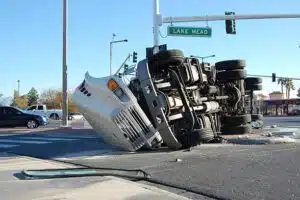
This comprehensive guide will equip you with the knowledge and tools needed to transform your workplace safety culture. You’ll discover the core components of effective proactive safety programs, learn practical implementation strategies, and understand how to measure success while overcoming common challenges. Whether you’re a safety manager looking to advance your career, a business owner seeking to protect your team, or an operations leader tasked with reducing risks, this article will help you build a safety program that truly protects lives and saves your company money.
What is Proactive Safety?
Proactive safety focuses on preventing workplace accidents before they occur through systematic risk identification and mitigation. Unlike traditional reactive approaches that respond to incidents after they happen, proactive safety emphasizes early detection, continuous monitoring, and ongoing prevention strategies. This approach recognizes that collecting and analyzing data on potential risks through activities such as inspections, risk assessments, and near-miss reporting allows organizations to intervene before accidents happen. As part of this proactive approach, organizations use leading indicators—such as near-miss reports and safety observations—to predict and prevent incidents before they occur.
The methodology involves regular safety assessments, predictive analytics, and employee engagement in safety protocols. Key components include hazard identification—recognizing potential sources of harm in the workplace—and comprehensive risk assessment processes that evaluate both the likelihood and potential severity of identified hazards. Near-miss reporting serves as a critical early warning system, documenting events that could have led to accidents but didn’t, thereby exposing hidden risks that might otherwise go unnoticed.
Companies implementing proactive safety strategies see up to 40% reduction in workplace incidents compared to reactive approaches. This dramatic improvement stems from the systematic nature of proactive programs, which address risks before they manifest as actual injuries or accidents. The approach has evolved from traditional industrial safety management, moving beyond post-incident analyses to embrace a preventive philosophy that makes safety a continuous, organization-wide priority.
External safety consultants or specialized services can assist organizations by providing support for implementing proactive safety programs, including guidance on employee training and ensuring OSHA compliance.
Research consistently demonstrates that proactive safety programs deliver measurable results. Organizations using systematic safety assessments, data-driven predictive analytics, and active employee engagement in safety protocols achieve significantly better outcomes than those relying on reactive methods. This success comes from the fundamental premise that prevention is more effective—and more cost-effective—than response.
Core Components of Proactive Safety Programs
Effective proactive safety programs are built on several essential pillars that work together to create comprehensive protection for employees and organizations. These components form the foundation of any successful safety initiative and must be carefully planned and executed to achieve maximum impact.
Comprehensive safety training, including OSHA 10-hour and 30-hour certification programs for all personnel levels, serves as the cornerstone of proactive safety. These classes are available both in-person and online to accommodate different learning needs and locations, ensuring accessibility and versatility. These programs ensure that everyone from new drivers and recent graduate employees to experienced cdl holders and cmv drivers understand fundamental safety principles, hazard recognition techniques, and legal requirements. The training covers everything from basic safety procedures to specialized skills needed for specific equipment and job functions.
Regular workplace inspections conducted weekly by trained supervisors with documented findings and corrective actions provide the ongoing oversight necessary to maintain safe conditions. These inspections go beyond simple compliance checks, focusing on real-time hazard detection and timely corrective action. In addition, implementing safety observation programs—where supervisors or peers observe work practices—can help identify unsafe behaviors or conditions before they lead to incidents. Supervisors trained in proper inspection techniques can identify potential problems before they escalate into serious hazards, creating a continuous feedback loop that strengthens the overall safety program.
First aid training, CPR, and AED certification ensure immediate response capabilities during emergencies. When accidents do happen despite preventive measures, having employees prepared to provide immediate assistance can save lives and minimize the severity of injuries. This training is particularly crucial in industries like construction, manufacturing, and transportation where the potential for serious accidents is higher.
Equipment-specific safety training covering proper operation procedures and compliance requirements addresses the unique hazards associated with different types of machinery, tools, and vehicles. For companies operating commercial trucks, this includes specialized cdl training that emphasizes the importance of understanding different CDL class types, such as Class A and Class B, for proper training and licensing. Ongoing education for drivers about road safety, weight limitations, and proper vehicle operation is also essential. Each structured course is regularly updated to meet industry standards and regulations, and training programs must be tailored to address industry-specific risks, whether that involves understanding regulations for cmv drivers or learning proper procedures for handling hazardous materials.
EPA Renovate, Repair, and Painting (RRP) certification for construction and maintenance operations demonstrates the need for specialized certifications that address specific regulatory requirements. These programs protect both workers and the public from hazards like lead paint exposure, showing how proactive safety extends beyond the immediate workplace to encompass broader community protection.
Implementation Strategies for Effective Proactive Safety and First Aid Training
Successfully implementing proactive safety requires a strategic approach that addresses both technical and cultural aspects of workplace safety. The most effective programs combine systematic planning with strong leadership commitment and employee engagement.
Establish baseline safety metrics through comprehensive workplace hazard assessments and incident analysis. This critical first step involves conducting thorough evaluations of current safety conditions, reviewing historical incident data, and identifying areas where improvements are needed. Organizations must understand their starting point to set realistic goals and measure progress effectively. This assessment should examine everything from physical hazards and equipment conditions to employee knowledge levels and existing safety practices. Additionally, assessing the safety climate—employees’ perceptions of safety priorities and management commitment—provides valuable insight into the organization’s readiness for proactive safety.

Create safety leadership roles at supervisory levels with authority to halt unsafe operations immediately. Empowering front-line supervisors to stop work when they identify hazards sends a clear message that safety takes priority over production schedules. These leaders must be properly trained to recognize dangerous situations and equipped with the authority to take corrective action without fear of retribution. This approach ensures that safety decisions can be made quickly at the operational level, preventing accidents before they occur.
Implement predictive maintenance schedules for equipment to prevent mechanical failures and associated injuries. Regular maintenance of trucks, machinery, and safety equipment reduces the likelihood of unexpected breakdowns that can create hazardous situations. This is particularly important in transportation, where vehicle failures can lead to serious crashes and put both drivers and the public at risk. Predictive maintenance uses data analytics to identify potential problems before they result in equipment failures.
Develop clear communication channels for reporting near-misses and safety concerns without fear of retribution. Creating an open reporting culture encourages employees to share information about potential hazards and close calls that might otherwise go unreported. This information provides valuable insights into systemic risks and helps organizations identify patterns that could lead to future accidents. Anonymous reporting systems can be particularly effective in encouraging participation from employees who might be reluctant to raise concerns directly.
Building Safety Culture Through Leadership
Strong safety culture begins with visible commitment from senior management and extends throughout the organization. Leaders must demonstrate through their actions that safety is a core value, not just a compliance requirement.
Senior management commitment demonstrated through visible participation in safety meetings and training sessions signals to all employees that safety is a top organizational priority. When executives attend safety briefings, participate in training courses, and engage directly with workers about safety concerns, it creates a culture where safety is valued at every level. This commitment must be consistent and ongoing, not just displayed during safety weeks or after incidents occur.
Regular safety briefings conducted at the start of each shift to address daily hazards and safety priorities keep safety top-of-mind for all workers. These brief meetings, often called safety huddles, provide opportunities to discuss specific hazards related to the day’s work, review recent incidents or near-misses, and reinforce key safety messages. For cmv drivers, these briefings might focus on weather conditions, traffic patterns, or specific route hazards that could affect their driving.
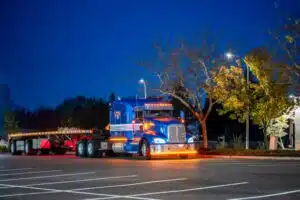
Integration of safety performance metrics into employee evaluations and advancement criteria ensures that safety remains a priority throughout employees’ careers. When safety performance influences promotion decisions and performance reviews, it reinforces the message that safety is integral to job success. This is particularly important for positions with significant safety responsibilities, such as supervisors, trainers, and equipment operators.
Technology Integration in Proactive Safety
Modern technology has revolutionized proactive safety by providing tools that enable real-time monitoring, automated reporting, and predictive analysis. These technological solutions enhance traditional safety programs and provide new capabilities for preventing accidents.
Digital safety management systems track training completion, certification renewals, and compliance status across the entire organization. These platforms centralize safety information, making it easy for managers to identify training gaps, schedule refresher courses, and ensure that all employees maintain required certifications. For companies with cdl holders and cmv drivers, these systems can track driver qualifications, medical certifications, and ongoing training requirements with just a few clicks.
Mobile applications enable real-time incident reporting with photo documentation and GPS location data. When workers can report hazards or incidents immediately using their smartphones, organizations can respond more quickly to address problems. These apps often include features like hazard categories, automatic notification systems, and the ability to attach photos that help safety professionals understand the situation more clearly. The GPS functionality ensures that location-specific hazards are properly documented and addressed.
Wearable technology monitoring environmental conditions like air quality, noise levels, and worker fatigue indicators provides continuous oversight of workplace conditions. These devices can detect dangerous exposure levels and alert both workers and supervisors when intervention is needed. In industries like construction or manufacturing, wearable sensors might monitor for heat stress, toxic gas exposure, or excessive noise levels that could lead to long-term health problems.
Automated alerts for equipment maintenance schedules and safety inspection due dates ensure that critical safety activities are not overlooked. These systems can send notifications via email, text message, or through mobile apps to remind responsible personnel when inspections are due, certifications need renewal, or equipment requires maintenance. This automation reduces the risk of human error and helps maintain consistent safety standards across multiple locations.
Data analytics platforms identify patterns in near-miss reports to predict and prevent future incidents. By analyzing trends in safety data, organizations can identify systemic issues that might not be apparent from individual incidents. These platforms might reveal that certain types of accidents are more likely to occur during specific shifts, in particular locations, or under certain conditions, enabling targeted prevention efforts.
Technology integration enables organizations to deliver safety training and consultation services across the country, ensuring consistent standards regardless of location.
Industry-Specific Proactive Safety Applications
Different industries face unique safety challenges that require tailored approaches to proactive safety. Understanding these industry-specific requirements is essential for developing effective safety programs that address the most relevant risks.
Construction sites implement daily safety huddles and mandatory personal protective equipment inspections to address the high-risk nature of construction work. These sites face constantly changing conditions as work progresses, making daily communication essential for identifying new hazards and ensuring that all workers are aware of current risks. Conducting a job safety analysis for each task helps identify and control hazards before work begins, further reducing the likelihood of accidents. PPE inspections verify that hard hats, safety glasses, fall protection equipment, and other protective gear are in good condition and properly used.
Manufacturing facilities use lockout/tagout procedures and machine-specific safety training protocols to protect workers from the unique hazards associated with industrial equipment. These facilities must ensure that workers understand how to safely operate, maintain, and repair complex machinery. Lockout/tagout procedures prevent accidental equipment startup during maintenance, while machine-specific training addresses the particular risks associated with each piece of equipment.
Oil and gas operations require specialized certifications like SafeLand and advanced hazardous material handling training due to the extreme risks present in these environments. Workers in these industries face dangers ranging from hydrogen sulfide exposure to fire and explosion risks. The training programs prepare workers to recognize these hazards and respond appropriately to emergency situations that could threaten both individual safety and community safety.

Healthcare facilities establish infection control protocols and ergonomic injury prevention programs to protect both patients and healthcare workers. These organizations face unique challenges related to biological hazards, patient handling injuries, and workplace violence. Proactive safety programs in healthcare settings focus on prevention strategies that address these specific risks while maintaining the ability to provide quality patient care.
Each industry requires specialized knowledge and training approaches that address the most significant risks faced by workers. Successful proactive safety programs recognize these differences and tailor their approaches accordingly, ensuring that workers receive relevant training that prepares them for the specific dangers they may encounter. Comprehensive training and certification across industries help workers land new opportunities and advance their careers.
Measuring Proactive Safety and Road Safety Success
Effective measurement is crucial for demonstrating the value of proactive safety programs and identifying areas for improvement. Organizations must track both leading and lagging indicators to gain a complete picture of safety performance and program effectiveness.
Track leading indicators including near-miss reporting rates, safety training completion percentages, and inspection compliance to gauge the health of your safety program before incidents occur. Leading indicators provide early warning signs of potential problems and help safety professionals intervene before accidents happen. Near-miss reporting rates indicate whether employees are engaged in the safety process and comfortable reporting potential hazards. High reporting rates generally suggest a positive safety culture where workers feel empowered to identify and address risks.
Safety training completion percentages reveal whether employees are receiving the knowledge and skills they need to work safely. This metric is particularly important for organizations with high turnover or seasonal workers who may not have received comprehensive safety orientation. For companies employing cmv drivers or recent graduate employees, tracking training completion helps ensure that all workers meet minimum competency requirements before beginning work.
Monitor lagging indicators such as Total Recordable Incident Rate (TRIR) and Days Away, Restricted, or Transferred (DART) rates to measure the ultimate outcomes of your safety efforts. While these metrics reflect past performance rather than future risk, they provide concrete evidence of program effectiveness and help organizations benchmark their performance against industry standards. TRIR measures the number of work-related injuries and illnesses per 100 full-time employees, while DART rates focus specifically on more serious incidents that result in time away from work or job restrictions.
Conduct quarterly safety culture surveys to assess employee engagement and perception of safety priorities throughout the organization. These surveys can reveal whether employees believe management is truly committed to safety, whether they feel comfortable reporting hazards, and whether they believe safety training is effective. Regular surveys help organizations identify cultural issues that might not be apparent from incident data alone.
Calculate return on investment by comparing safety program costs against reduced insurance premiums and incident expenses. Successful proactive safety programs often pay for themselves through reduced workers’ compensation costs, lower insurance premiums, and decreased productivity losses from accidents. Organizations should track these financial benefits to demonstrate the business case for continued investment in safety programs and to secure funding for program expansions.
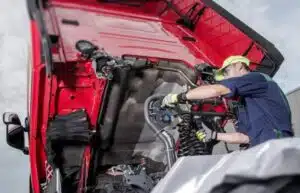
|
Safety Metric |
Frequency |
Target |
Purpose |
|---|---|---|---|
|
Near-miss reports |
Monthly |
Increasing trend |
Early hazard identification |
|
Training completion |
Quarterly |
100% |
Ensure workforce competency |
|
TRIR |
Annual |
Below industry average |
Measure incident outcomes |
|
Safety surveys |
Quarterly |
>80% positive response |
Assess culture health |
|
Inspection compliance |
Weekly |
100% |
Maintain hazard controls |
Integrating Proactive Safety Into Your Fleet
Fleet safety represents a critical component of proactive safety for organizations that operate commercial vehicles. The unique risks associated with road transportation require specialized approaches that address both vehicle-related hazards and driver behavior factors.
Monthly safety meetings provide regular opportunities to address fleet-specific safety concerns and keep drivers engaged in safety initiatives. These meetings should cover topics relevant to current conditions, such as seasonal driving hazards, changes in regulations, or lessons learned from recent incidents. For companies with cmv drivers, these meetings might address hours of service requirements, electronic logging device compliance, or specific route hazards that drivers should be aware of.
Defensive driving techniques and distracted driving prevention form the core of effective fleet safety training. With the increasing prevalence of mobile devices and other distractions, drivers must be trained to maintain focus on the road and recognize situations that require defensive driving responses. This training should address specific behaviors that contribute to crashes, such as following too closely, aggressive driving, and failure to properly check blind spots.
Vehicle inspection programs ensure that trucks and other commercial vehicles remain in safe operating condition. Daily pre-trip inspections conducted by drivers help identify mechanical problems before they can cause accidents, while periodic inspections by qualified mechanics address more complex maintenance needs. These inspections should cover critical safety systems including brakes, steering, lights, and tires.
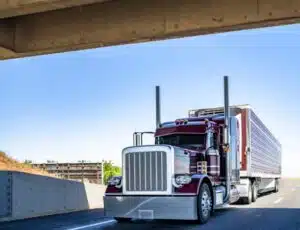
Technology integration in fleet safety includes vehicle monitoring systems that track driver behavior, vehicle maintenance needs, and route optimization. These systems can provide real-time feedback to drivers about speeding, hard braking, or other risky behaviors while also alerting fleet managers to vehicles that may need maintenance attention.
Overcoming Common Proactive Safety Challenges
Despite the proven benefits of proactive safety programs, organizations often encounter obstacles during implementation. Understanding and preparing for these challenges can help ensure successful program deployment and long-term sustainability.
Address employee resistance through transparent communication about safety benefits and involving workers in program development. Some employees may view new safety requirements as unnecessary bureaucracy or may be skeptical about management’s commitment to safety. Overcoming this resistance requires clear communication about how safety programs protect workers and their families, as well as meaningful involvement of employees in designing and implementing safety procedures. When workers help develop safety protocols, they are more likely to follow them and encourage others to do the same. Effective change management strategies are essential for guiding organizations through the transition to proactive safety programs and ensuring long-term adoption. Additionally, focusing on customers’ needs and satisfaction when designing and implementing proactive safety programs ensures that safety initiatives are aligned with the expectations and requirements of those you serve.
For new drivers or employees from truck driving school who may be unfamiliar with comprehensive safety programs, additional education about the personal benefits of safety compliance can help build acceptance. Emphasizing how safety training helps them protect their new career and avoid injuries that could end their ability to work often resonates with workers who have invested time and money in developing job skills.
Secure adequate funding by demonstrating cost savings from reduced workers’ compensation claims and productivity improvements. Many organizations hesitate to invest in comprehensive safety programs due to upfront costs, but successful programs often pay for themselves through reduced insurance premiums, fewer workers’ compensation claims, and improved productivity. Safety managers should prepare detailed cost-benefit analyses that show how investments in training, equipment, and technology will generate positive returns through reduced accident costs.
Documentation of successful safety outcomes from pilot programs or partial implementations can help build the business case for expanded funding. When organizations can demonstrate concrete results from initial safety investments, it becomes easier to secure additional resources for program expansion.
Maintain program momentum through regular refresher training and continuous improvement initiatives. Safety programs can lose effectiveness over time if they become routine or if employees begin to view them as less important. Regular refresher training helps reinforce key concepts and introduces new safety techniques or technologies. Continuous improvement processes that incorporate employee feedback and lessons learned from incidents help keep programs relevant and effective.
Recognition programs that celebrate safety achievements and acknowledge employees who contribute to safety improvements help maintain enthusiasm for safety initiatives. When employees see that their safety efforts are valued and recognized, they are more likely to continue participating actively in safety programs.

Regular attendance at safety conferences, participation in industry associations, and subscription to regulatory update services help organizations stay informed about changes that may affect their safety programs. For companies with cmv drivers, staying current with FMCSA regulations is particularly important, as violations can result in significant penalties and operational disruptions.
Scale programs across multiple locations using standardized procedures and centralized training management systems. Organizations with multiple facilities or locations face unique challenges in ensuring consistent safety standards across all sites. Standardized procedures help ensure that all locations follow the same safety protocols, while centralized training systems enable consistent delivery of safety education regardless of location.
Technology solutions that enable remote training delivery and centralized progress tracking can be particularly valuable for multi-location organizations. These systems allow safety managers to monitor compliance across all locations and identify sites that may need additional support or resources.
The Future of Proactive Safety
The evolution of proactive safety continues to accelerate as new technologies and methodologies emerge. Organizations that want to stay ahead of safety challenges must understand these trends and prepare for future developments in safety management.
Artificial intelligence and machine learning are increasingly being used to analyze safety data and predict potential incidents before they occur. These technologies can identify patterns in near-miss reports, inspection findings, and incident data that might not be apparent to human analysts. As these systems become more sophisticated, they will enable more precise prediction of safety risks and more targeted prevention efforts. Predictive analytics will play an increasingly important role in identifying emerging risks and enabling proactive interventions.
Internet of Things (IoT) devices and smart sensors are expanding the ability to monitor workplace conditions in real-time. These devices can track everything from air quality and noise levels to worker movements and equipment performance. As sensor technology becomes more affordable and sophisticated, organizations will have unprecedented visibility into workplace hazards and the ability to respond immediately to dangerous conditions.

Virtual and augmented reality training systems are making safety education more immersive and effective. These technologies allow workers to practice responding to dangerous situations in safe, controlled environments where they can make mistakes and learn from them without risking injury. As these technologies become more accessible, they will likely become standard components of safety training programs.
The integration of safety management with broader business systems is creating opportunities for more holistic approaches to risk management. When safety data is integrated with production, quality, and financial systems, organizations can better understand the relationships between safety performance and overall business outcomes.
As the workplace continues to evolve with remote work, gig economy employment, and changing demographics, proactive safety programs must adapt to address new types of risks and new ways of working. Organizations that embrace these changes and continue to innovate in their approach to safety will be best positioned to protect their workers and achieve business success.
Remembering Why Proactive Safety Is Needed
Proactive safety represents more than just a compliance strategy—it’s a comprehensive approach to protecting lives, preserving careers, and building sustainable business success. The evidence is clear: organizations that invest in systematic hazard identification, comprehensive training, and strong safety culture achieve dramatically better outcomes than those that wait for accidents to happen.
The journey from reactive to proactive safety requires commitment, resources, and patience, but the benefits extend far beyond reduced incident rates. Companies that implement effective proactive safety programs create safer work environments where employees can thrive, families remain whole, and communities are protected. Whether you’re training new drivers fresh from cdl school, implementing advanced safety technologies, or building safety leadership capabilities throughout your organization, the principles outlined in this guide provide a roadmap for success.
The time to act is now. Every day that passes without a comprehensive proactive safety program in place represents missed opportunities to prevent injuries, save lives, and protect your organization’s future. Start by assessing your current safety capabilities, engage your team in developing improvement plans, and begin building the culture of prevention that will serve your organization for years to come.
Remember that proactive safety is not a destination but a continuous journey of improvement. As your organization grows, as regulations evolve, and as new technologies emerge, your safety programs must adapt and advance. The investment you make today in proactive safety will pay dividends in the form of protected workers, reduced costs, and the peace of mind that comes from knowing you’ve done everything possible to ensure that every team member goes home safely at the end of each day.
For assistance, consultation, or to schedule services related to proactive safety programs, contact our team today.
Occupational Health and Safety in the Modern Workplace
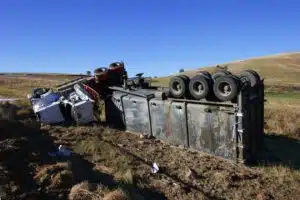
Organizations like ProActive Safety Services play a pivotal role in advancing workplace safety by offering aid training, including CPR and first aid training, to employees at all levels. These programs equip teams with the skills needed to respond effectively in emergencies, reducing the impact of accidents and potentially saving lives. By embedding safety into daily operations and making it a shared responsibility, companies demonstrate their commitment to protecting their most valuable assets—their people.
A proactive approach to occupational health and safety not only minimizes risks but also contributes to a positive work environment where employees feel valued and secure. This, in turn, drives business success by reducing downtime, lowering insurance costs, and enhancing overall morale. Ultimately, when businesses invest in safety practices and empower their employees through training and regular inspections, they lay the groundwork for sustainable growth and a reputation as a responsible, caring employer.
Hazard Awareness and Prevention Strategies
Hazard awareness and prevention are at the heart of any effective safety program. In the modern workplace, both employers and employees must remain vigilant about potential dangers, from blind spots and weight limitations to the growing issue of distracted driving. Recognizing these hazards early and implementing targeted prevention strategies can make the difference between a routine day and a life-altering accident.
ProActive Safety Services offers specialized training and certification programs, such as CDL training, that help drivers and employees identify and mitigate risks before they lead to injuries or crashes. For example, new drivers who attend a reputable truck driving school, like Stevens Transport, receive hands-on instruction in hazard recognition, safe driving practices, and compliance with industry regulations. This comprehensive approach ensures that drivers are well-prepared to handle the unique challenges of operating trucks and other commercial vehicles.
By fostering a culture of hazard awareness, companies empower their teams to take proactive steps—such as conducting thorough pre-trip inspections, adhering to weight limitations, and staying alert to blind spots. These practices not only protect individual drivers and employees but also contribute to a safer work environment for everyone. Simple, proactive measures can save lives, prevent accidents, and reduce the risk of injuries, making hazard awareness and prevention strategies essential components of any successful safety program.
Training and Certification for Proactive Safety

For CDL holders, CMV drivers, and other professionals, staying current with training is often just a few clicks away on the company’s website. These accessible programs ensure that drivers and employees can complete their training on their own schedule, making it easier to maintain compliance and stay prepared for the demands of the job. By offering relevant, up-to-date training, companies demonstrate their commitment to safety and foster a culture of respect and responsibility.
Certification programs not only help prevent injuries and accidents but also empower employees to take pride in their skills and their role in maintaining a safer work environment. When companies invest in comprehensive training, they build a workforce that is knowledgeable, engaged, and ready to respond to any challenge—ultimately protecting both people and business success.
Employee Engagement and Participation in Safety Initiatives
Active employee engagement is a cornerstone of any successful safety program. When employees are encouraged to participate in safety initiatives—such as reporting hazards, attending training sessions, and joining safety inspections—they become true partners in creating a safer work environment. This sense of ownership fosters a strong community and pride within the team, driving continuous improvement in safety practices.
Companies like ProActive Safety Services support businesses in engaging their employees through dedicated subject matter experts, practical training programs, and clear safety procedures. Establishing a safety committee that includes both employees and management is an effective way to develop and implement safety protocols tailored to the unique needs of the workplace. These committees can lead regular inspections, review safety practices, and ensure that everyone’s voice is heard when it comes to identifying and addressing hazards.
By empowering employees to take an active role in safety, businesses not only reduce risks but also build a culture of trust and collaboration. Engaged employees are more likely to follow procedures, look out for one another, and contribute innovative ideas that enhance overall safety. This collective commitment to safety strengthens the entire organization and helps ensure long-term success.
Safety Communication and Feedback Mechanisms

By prioritizing open communication and feedback, companies create an environment of transparency, respect, and consent. Employees feel empowered to speak up about hazards and share their insights, knowing their concerns will be heard and addressed. Utilizing technology—such as mobile apps and online platforms—can further streamline safety communication, making it easy for employees to report issues and access vital safety resources with just a few clicks.
Establishing clear procedures for feedback not only helps prevent accidents but also reinforces a culture where safety is everyone’s responsibility. When employees are encouraged to participate in safety discussions and their input is valued, businesses benefit from a more engaged workforce and a safer work environment for all.
Incident Reporting and Investigation
Incident reporting and investigation are essential pillars of a safer work environment, enabling companies to identify hazards and prevent future accidents. When an incident occurs—whether it’s a minor injury, equipment damage, or a near-miss—prompt and accurate reporting allows businesses to capture critical details that might otherwise be overlooked. ProActive Safety Services supports companies by providing expert guidance on effective incident reporting, ensuring that every accident is thoroughly documented and analyzed.
The company’s team of subject matter experts works closely with businesses to conduct comprehensive investigations, helping to uncover the root causes behind injuries, crashes, or equipment failures. By understanding not just what happened, but why it happened, companies can implement corrective actions that address underlying hazards and prevent recurrence. This proactive approach not only reduces the risk of future incidents but also protects the lives and well-being of employees, including new drivers, CDL holders, and CMV drivers.
ProActive Safety Services offers customized training courses on incident reporting and investigation, equipping drivers and employees with the knowledge and skills needed to recognize hazards, report incidents accurately, and participate in investigations. These courses empower teams to take an active role in maintaining a safer work environment, ultimately saving lives and reducing the risk of injuries, crashes, and costly equipment damage. By prioritizing incident reporting and investigation, companies demonstrate their commitment to safety and create a culture where every employee feels responsible for protecting themselves and their colleagues.
Managing Fast-Paced Work Environments

Through a range of specialized training courses—including aid training, first aid training, and CDL training—ProActive Safety Services empowers employees to recognize and respond to hazards quickly and effectively. These programs are designed to build essential skills and knowledge, ensuring that workers can operate equipment safely, navigate blind spots, and adhere to best practices even under pressure. The company’s team of trainers and subject matter experts collaborate with businesses to develop customized safety procedures and practices tailored to their specific needs.
By prioritizing safety in fast-paced settings, companies can significantly reduce the likelihood of accidents, injuries, and equipment damage. Implementing clear procedures, providing ongoing training, and fostering a culture of awareness help protect employees and create a more efficient, productive workplace. ProActive Safety Services is dedicated to supporting businesses with the resources, expertise, and training needed to manage risks, safeguard their teams, and achieve long-term success in any environment.
Regulatory Compliance and Standards
Navigating the complex landscape of regulatory compliance and safety standards is a critical responsibility for modern businesses. ProActive Safety Services is dedicated to helping companies stay up-to-date with the latest regulations, including FMCSA, CMV, and DOT requirements, ensuring that every aspect of their operations meets or exceeds industry standards.
The company provides expert guidance on regulatory compliance, offering a comprehensive suite of training courses and resources—such as CDL school and truck driving school programs—to help businesses develop a strong culture of safety and compliance. These courses equip employees with the knowledge and skills needed to operate trucks and equipment safely, understand current regulations, and avoid costly fines or penalties.
By making regulatory compliance a top priority, companies can reduce the risk of accidents, injuries, and equipment damage, while also protecting their employees, customers, and reputation. ProActive Safety Services partners with businesses to deliver dedicated consultation, training, and support, helping organizations achieve compliance, maintain high safety standards, and build trust with their customers and communities. With a proactive approach to regulations and standards, companies can confidently advance their operations, knowing they are prepared to meet the challenges of today’s ever-changing safety landscape.

